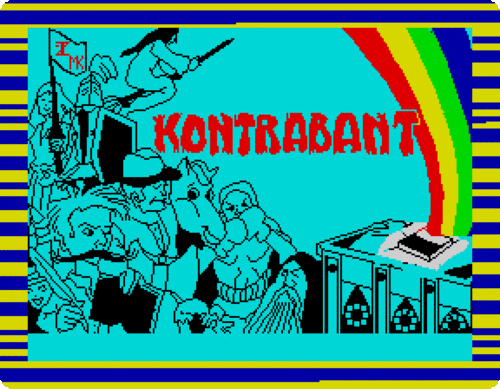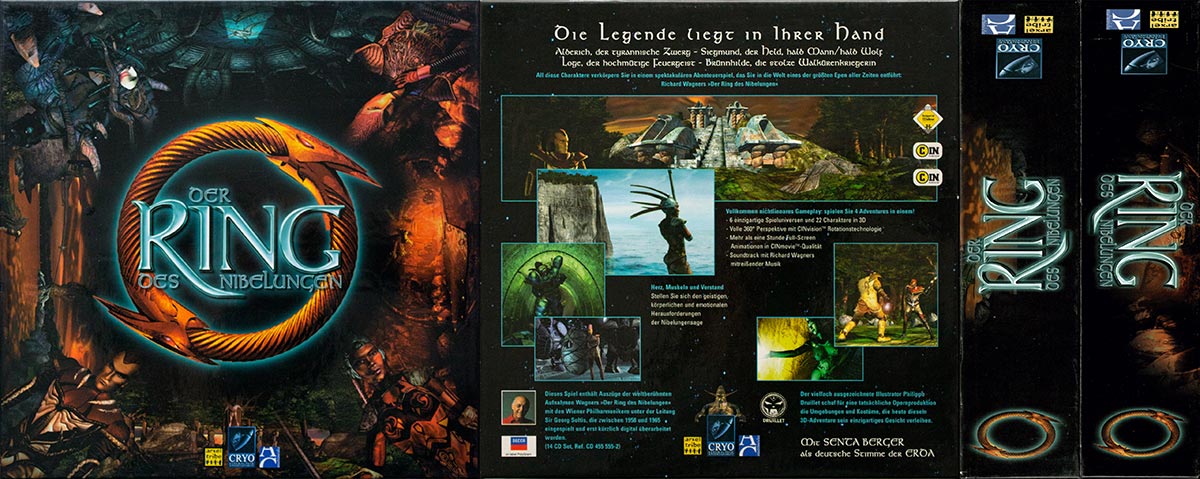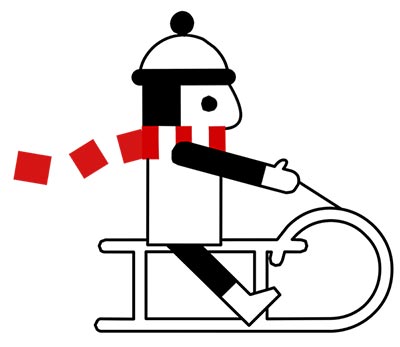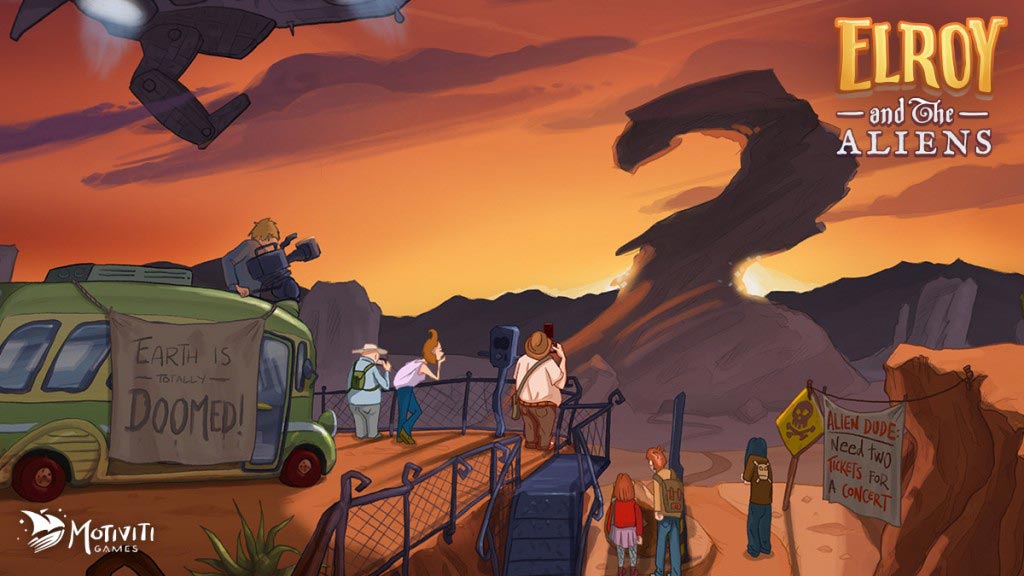brief history of Slovenian game development
In a country with a population of just 2 million people you can quickly figure out that not many are developers and if you take those that are, you can find out that game developers are even more uncommon, since earning your everyday bread in this wild industry is similar to playing lottery. Yet, there has always been a lively game development scene in Slovenia and some players managed to make it big. Out of curiosity I researched it a bit, trying to collect some of the pieces together into a brief history of Slovenian game development, since I couldn’t find anything around.

In a country with a population of just 2 million people you can quickly figure out that not many are developers and if you take those that are, you can find out that game developers are even more uncommon, since earning your everyday bread in this wild industry is similar to playing lottery. Yet, there has always been a lively game development scene in Slovenia and some players managed to make it big. Out of curiosity I researched it a bit, trying to collect some of the pieces together into a brief history of Slovenian game development, since I couldn’t find anything around.
It all started in June 1984 when Kontrabant was published by Žiga Turk and Matevž Kmet. It was a text adventure game, costing 700 Yugoslavian dinars, and it ran on ZX Spectrum. Game theme was quite popular for that time in history – build your own computer by smuggling parts into Yugoslavia. The publisher – Radio Študent (student radio) also ran a prize contest at the time, where the best smugglers would submit letters by mail, containing passwords, number of steps and score points and a short funny write-up on how it was playing the game. The main prize was the ZX Spectrum which was awarded by a coin toss between the first two guys who finished the game – Iztok Saje as first to solve it and Peter Sokolov as second (as reported by the magazine Moj Mikro, November 1984, Peter won the ZX and Iztok got a “Zlatorog” sponsor package – probably beer considering what the company produced).
A sequel followed in December the same year with Kontrabant 2. Later on Žiga Turk in Ciril Kraševec created the publishing company Xenon, which released a few more Spectrum games – Smrkci (Smurfs), Eurorun and Bajke, together with Croatian publisher Suzy Soft from Zagreb, which was another adventure and treasure hunting game based on stories from Slovenian writer and historian Janez Trdina – Bajke in povesti o Gorjancih (Tales and stories about Gorjanci).
The next mention is a game called Zakladi Slovenije (Treasures of Slovenia) by Matej Kurent, which came out in October 1986 and was the first self-published game (indie), costing 1200 DIN. By playing the game you got to know Slovenia better, while you had to find a ship, sail and radar in order to be able to sail away (a bit silly since Slovenia has a lot of beautiful landmarks, but you know – abroad is always more interesting than at home).
The Commodore 64 scene was mostly made of pirated games or copies of popular games. Pirated games were advertised in magazines and even broadcasted over national radio for anyone free to record. While there were various demos and programs written, I couldn’t find anything major in Commodore gaming.
In 1989 Arxel Tribe was founded by Matjaž Požlep and Diego Zanco with the initial idea of producing computer generated images. They made several TV shows and opened a Paris based 3D subsidiary and later expanded into an international collaboration switching to game production in 1996. After the first successful game release in France with Pilgrim (250.000 units sold, published by Infogrames), they had their first international breakthrough of the studio in 1998 with Ring: The Legend of the Nibelungen published under Cryo, which sold an amazing 700.000 copies — a lot at the time.

Ring is an interactive science fiction opera adventure, a 3D graphical adventure set in the 40th century that follows the story of Richard Wagner’s epic opera Ring of the Nibelungen. As one of four characters, the player must conclude the legend of the Ring and restore humanity to its rightful place as leaders of the universe by defeating four evil powers.
In 1999 Arxel Tribe became a video game publisher releasing games in 35 countries developed by fellow studios based in Europe, North America and Korea, along its own creations. The company was sold in 2001 to one of its clients, CTO S.p.A., Italy’s largest video game distributor.
Arxel Tribe in a way paved the way for ZootFly, a game studio founded in 2002 by Boštjan Troha, Denis Rožaj and David Pangerl, who came from Arxel Tribe’s team. One of the more know titles developed was Panzer Elite Action: Fields of glory. It’s a story of three tank commanders and their crew. The German commander, encouraged by easy successes in Poland and France, moves on to the Eastern Front and the brink of victory with the taking of Stalingrad. Players meet the Russian commander in desperate straits as he helps defend Stalingrad, and follow him as the tide turns against the Germans and he joins the massive battle of Kursk. The American commander enters the war at the Normandy Beachhead on D-Day. After the struggle for the Bocage, he defends against the German outbreak at the Battle of the Bulge and then drives on to the victorious crossing of the Rhine. Game was released on PC and the Xbox.
Another well selling title done in the later years was Marlow Briggs and the Mask of Death, co-developed with Microsoft on a budget of $5 million, bringing in $45 million.
Zootfly also invested a lot of time into research of psychometrics – building psychological profiles of players using their inputs and adapting the game accordingly. For example, a game could have three distinctly different conclusions and the psychometrics engine would pick the right one for the player. The goal was to avoid unwanted endings, as the game would hopefully have enough feedback to deliver what the player wanted. The immediate reactions of the game would work on positive feedback. If the player were cerebral, they would receive more cerebral challenges; if violent, more violence.
Immediate responses could improve the usability/learning curves as well. For example, if the player were to quick-save often, the game might be too difficult, and if they were to not discover many rooms in a time period, they might be lost and need additional stimuli to proceed. If they were too fast and the game was not fun anymore, they might require more interesting obstacles.
In the end this was probably also what sparkled interest for the acquisition of the Zootfly by a company that made luxury casino and gaming products, with hopes that this could be integrated into their machines.
2005 brought us Dugout Online a free to play online football manager browser game developed by Melderon. I remember playing this game at the time and compared to the Football Manager series by Sports Interactive, Dugout used auto-generated and country-localized player names (probably to avoid licensing), which brought a lot of fun into the game since often the name and surname combinations sounded silly, which added extra fun when buying and selling players (that also aged with season) and also got you a bit emotionally attached to them. Worth checking out if you are a football enthusiast, it is still running today.

In 2006, in times when Flash games were still thriving, you may remember the global phenomena game Line Rider done by Boštjan Čadež and released first on DeviantArt in September 2006. The game itself is pretty simple, you are presented with a blank white space on which you can draw lines where Bosh, the main character, will ride with his sledge. This opens up millions of options for the user to create tracks and exploit the game physics in every possible way you can imagine. On July 1, 2008, the original Flash version was replaced by a new one written in Silverlight. It included a new feature that allowed people to send tracks to other people via Windows Messenger. On October 23, 2009, this was replaced by Beta 3, which has the option to use dual players, a camera, trapdoor and deceleration lines. A second release of the game also followed on Nintendo DS and Wii in 2008. It definitely became a cult game, which got featured all over the net and also won the Best Webtoy of 2006 award.
Moving forward to 2008 a new company called Actalogic was founded by David Pangerl from Zootfly. With a small team, which made a few different simulator games in the begining (Skyscraper simulator, Tank simulator, Hotel Empire), their first major success came in 2010 with the release of Agrar Simulator on Steam, which sold quite well in its early days. The company had some ups and downs, but they are still kicking today with the release of Hypernova: Escape from Hadea in 2017, a tower defense type of game.
With the rise of Android phones and mobile gaming we got more attempts of trying to break through in this field too.
The next big player – Outfit7 – started their journey in 2009. Samo and Iza Login founded it with the idea to enter the business of mobile apps, but soon turned into mobile gaming, when they developed a children’s app called Talking Tom Cat. It is a tamagotchi-like game, where you feed and pet your 3D cartoon-ish cat, but with an interesting feature where you can use a voice input to talk to it and it will repeat you words with a high pitched voice. Kids loved it and it sparkled a huge success and soon Talking Tom and friends followed, which added a few new characters into the game. Talking Tom and Friends reached 300 million downloads 19 months after its launch. The app franchise then went on to hit one billion downloads in June 2013 and reached over 230 countries worldwide. Later they expanded the story by releasing YouTube singles, various merchandise and an animated series in collaboration with Disney. The company sold in 2017 to the chinese for an incredible sum of $1 billion, but they still continue making new games.
An interesting case in indie scene is Bojan Klabjan with his Matches puzzle game. In 2015 he wrote the game out of boredom at his daily job. The game is as simple as it gets – solve logical and mathematical problems by adding or removing matches from patterns on screen. The games keeps the user engaged with over 1000 different levels. Level difficulty does not increase with each new level, but rather keeps the user engaged and entertained by mixing easy and hard levels through the game progression. This way an average user actually completes the game in approximately 14 days. The game was translated in 16 different languages, very well received by the public and quickly reached 10 million downloads, which allowed him to quit his job as bank sysadmin and concentrate on what he really enjoys doing.
Motiviti has been around since 2009, but I would like to specifically expose their currently-in-development game Elroy and the aliens. Elroy and the aliens is an adventure action puzzle game that reminds me a bit of Monkey Island as far as graphics go, and while it has been in development since 2015, the creators are promising a release soon (end of 2018, most probably 2019 considering they are putting in the free hours besides their regular projects), but for all the fans of this forgotten genre the wait is worth it.

There has already been a huge wave of good feedback from Steam community and getting green-lit was the first step. The game is running on Unity engine and features amazing hand-drawn and colorful graphics and they are promising us a good dose of humor including voice acting. I’ll be keeping an eye on it since there hasn’t been a game release of this type for a long time now.
Note: the following write-up was put together purely from my knowledge of the Slovenian game dev scene and from some minor research I did online in order to cover the early years. Link references can be found below for extra info. If you think that any major player is missing (early commodore scene? I was a kinder-garden kid at the time) contact me and I’ll be glad to expand the article with merits.
References:
http://retrospec.sgn.net/users/tomcat/yu/ZX_list.php
https://en.wikipedia.org/wiki/Arxel_Tribe
https://www.mobygames.com/game/ring-the-legend-of-the-nibelungen
https://en.wikipedia.org/wiki/ZootFly
https://www.linerider.com/
https://en.wikipedia.org/wiki/Line_Rider
https://www.deviantart.com/fsk/art/Line-Rider-beta-40255643
http://www.actalogic.com/
https://store.steampowered.com/app/650750/
https://www.delo.si/druzba/delova-borza-dela/z-racunalniskimi-igrami-na-svetovni-trg.html
https://en.wikipedia.org/wiki/Outfit
https://www.dugout-online.com
https://play.google.com/store/apps/details?id=com.klabjan.movethematchespuzzles&hl=en_US
https://www.rtvslo.si/rckc/slo/druzba/devet-milijonov-prenosov-iger-z-vzigalicami-in-direktorska-placa-za-ustvarjalca/367790
https://www.motiviti.com/
https://elroythegame.com/
http://javka.mn3njalnik.com/igrovje/slovenska-dogodivscina-na-obzorju-elroy-and-the-aliens/
http://www.slogamedev.net/